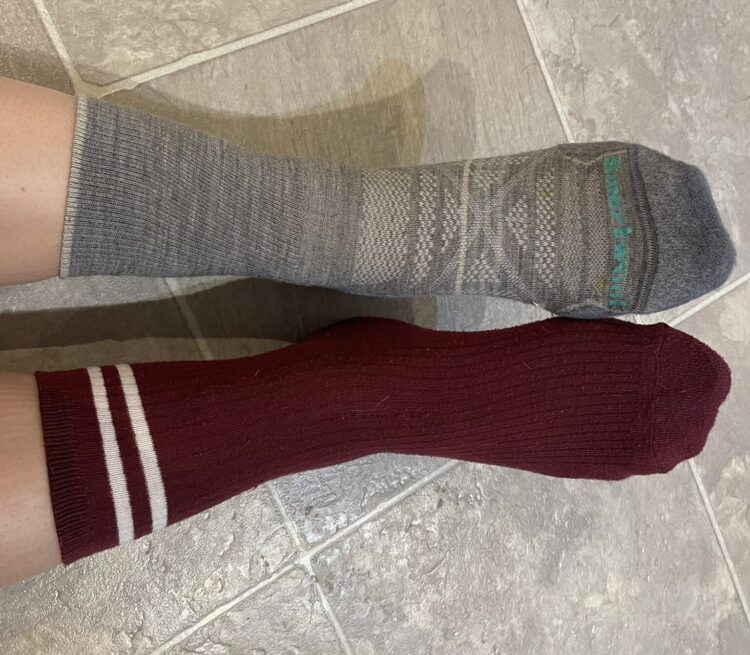You can wear hiking socks or regular socks when hiking. However, hiking socks are made from special material and are carefully constructed to help to make your trek more comfortable.
As much as I would love to tell you that hiking socks are a waste of money, as someone who spends a ton of time on her feet hiking, they have proven to be very beneficial.
If you have every suffered from foot problems when hiking (blisters, sweat, pain, frostbite, etc.) you should consider buying and wearing hiking socks for your next adventure.

What Are Hiking Socks?
Hiking socks are socks that are specifically designed to reduce common problems that occur when you’re hiking, such as sweat, blisters, pain, and chafing.
Hiking socks come in a variety of thicknesses, heights, styles, and sizes. It can be confusing to know which socks suit you best, but understanding why hiking socks are designed in such a way can help you choose which size and style is right for you.

Are Hiking Socks Really Necessary?
Hiking socks aren’t necessary – you can hike in any socks. However, hiking socks are definitely worth the splurge, especially if you’re going on a longer hike, are prone to blisters, or are planning to hike in cold environments.
When you hike, your body generates a lot of heat. This heat often gets trapped in our boots, and our feet start to sweat. The moisture from the sweat, plus the friction of your foot moving in your boot creates the perfect environment for blisters to form.
Sweaty feet also put your toes at risk of getting cold if you’re hiking in chilly weather conditions.
Hiking socks pull the sweat away from your skin and therefore decrease the moisture, helping to prevent blisters and cold toes. They also can help to reduce the friction placed on your feet, as the socks are padded in pressure points, such as the balls of the feet and the heels.
Hiking socks are most often crew-length, which helps to prevent irritation from the cuff of a boot or shoe, and makes the likelihood that your sock will fall down inside your shoe virtually impossible.

Materials for Hiking Socks
Hiking socks can be made from one material or a combination of materials. Higher quality hiking socks will be made solely from merino wool, though synthetic socks or blends are often more than adequate for typical hiking needs.
The one fabric to avoid when considering hiking socks is cotton, as it will make your feet wet, cold, and prone to blisters and sore spots. It is the fabric that most “regular” socks are made out of.
Wool
Merino wool is the most common fabric included in hiking socks. It is also a common fabric found in base layers.
“Smartwool” is another label often found in hiking socks and includes material of wool base.
Wool is the gold standard of hiking socks, as it is the fabric that best wicks sweat and helps with temperature regulation. This material will keep you the most comfortable during a hike, though it is often the more expensive option.

Synthetic
“Polyester”, “polypropylene”, and “acrylic” fabrics are all of synthetic blends.
Synthetic fabrics also help to wick sweat and keep your feet comfortable and dry. They are also more durable than wool fabrics, though they are not as warm. If you don’t want to buy socks that are specifically marketed as “hiking socks”, these are fabrics to look for.
Synthetic socks are also a cheaper option when compared to merino wool socks.
Blends
Many hiking socks are made from a wool/synthetic blend to help bring down the cost of the socks and to get the benefits of both the wool and the synthetic fabrics. Oftentimes nylon can be included in blended fabrics to help increase the stretch of the sock as well.
Hiking socks made with blended materials are often a great option, especially for casual hikers.
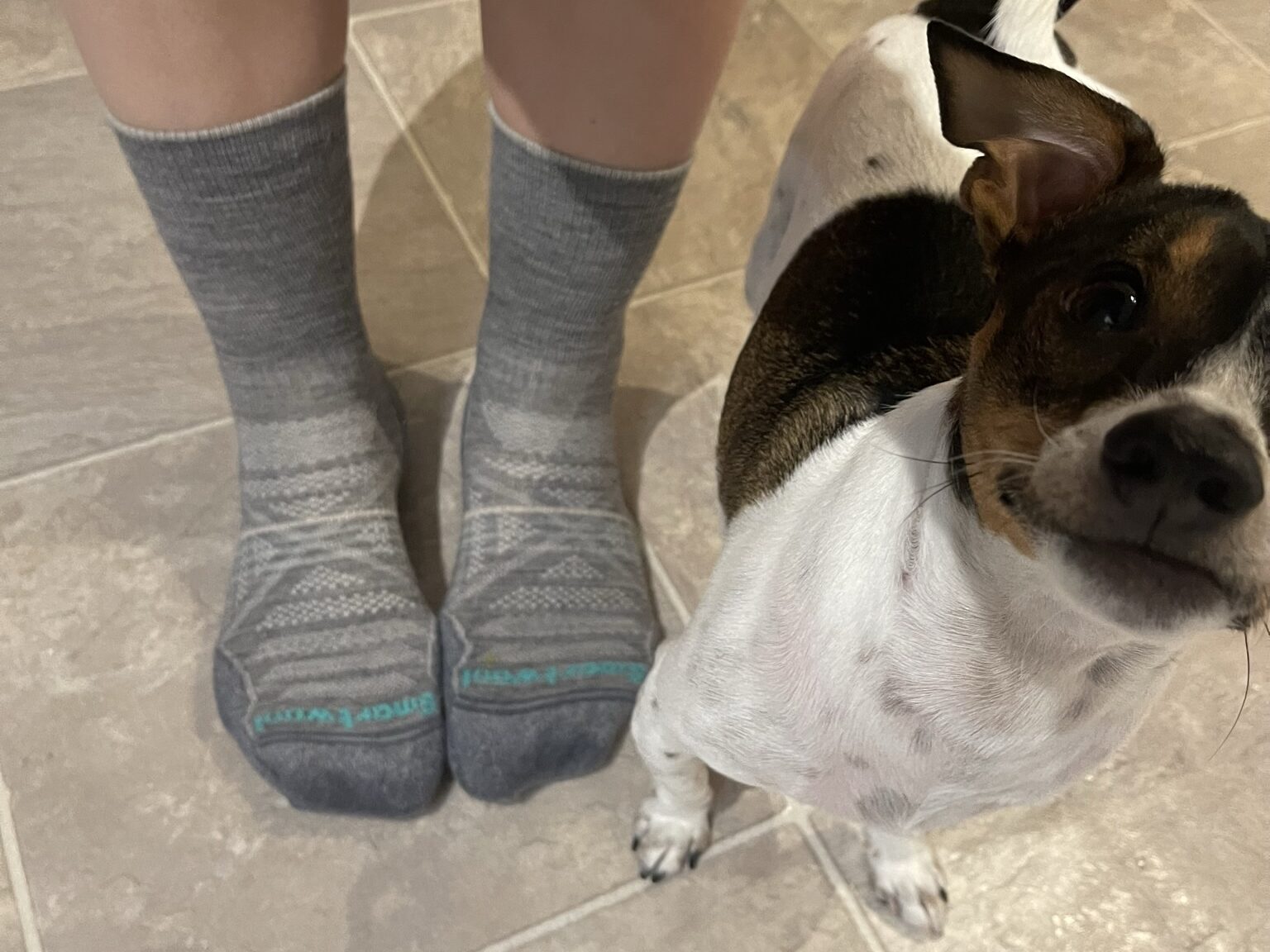
These Smartwool socks are my favorite pair of hiking socks. I like how they fit, feel, and look. Check out Smartwool to find a hiking sock that works for you.
Comparison of Hiking and Regular Socks
| Pros | Cons | |
| Hiking Socks | Sweat Wicking Temperature Regulation Decrease Friction Less Chance of Blisters and Rubs Cushioned Thickness Options Anti-Odor | Expensive Might Not Be Multi-Use Unsightly Lines Not Always Size Inclusive |
| Regular Socks | Comfortable More Affordable Likely Already Owned Style Preferences | Doesn’t Wick Sweat Cold Toes Increased Friction Increased Chance of Blisters No Cushion Not Tested for Hiking Holds Odor |
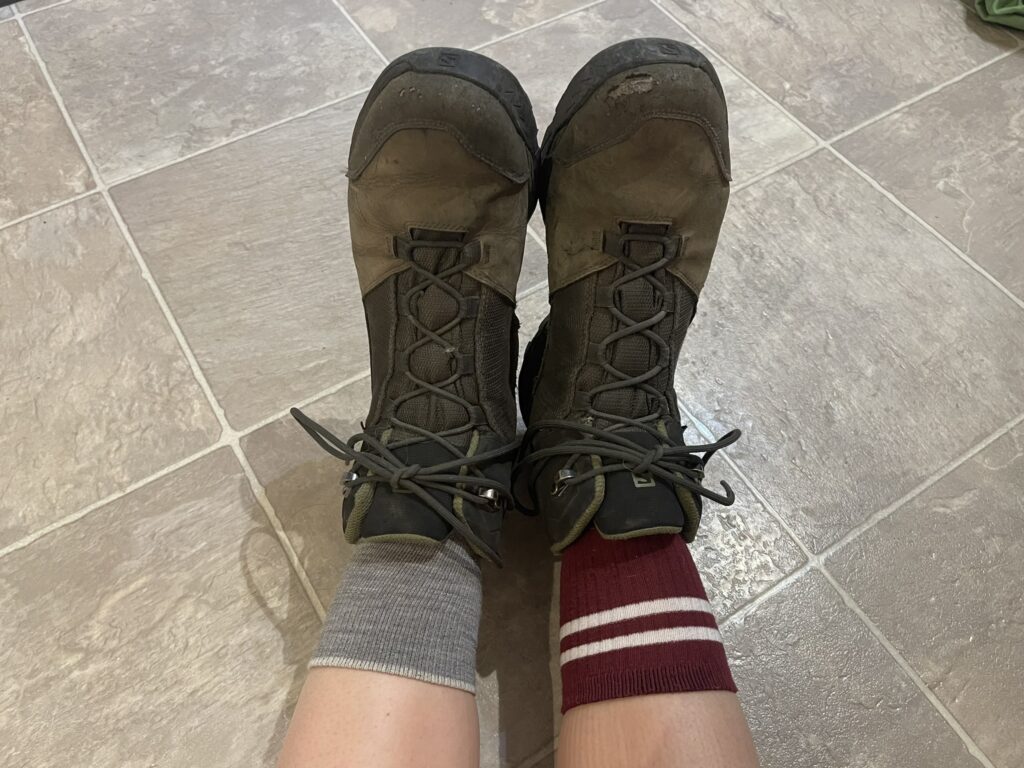
7 Pros of Wearing Hiking Socks
1. Sweat Wicking
Hiking socks are made from materials that are meant to pull sweat away from your skin and into the material. The moisture is more easily evaporated from the material compared to your skin.
This quality will leave your feet more dry throughout your hike than if you were to wear cotton socks or regular socks from home.
2. Temperature Regulation
Another benefit of the sweat being wicked away from your skin is better temperature regulation in your feet. When socks get wet, we lose heat quickly. This can become uncomfortable (even painful) in cold temperatures. In extreme situations, you can even risk frostbite on your toes.
Keeping your feet dry is an important factor in regulating the temperature of your feet, and hiking socks help to do this.
In the wintertime, or in cold environments, hiking socks become an even more critical piece of your clothing system.
3. Decrease Friction
Hiking socks are meant to fit snug against your skin. Less space between the fabric and your skin prevents the fabric from sliding around and causing irritation.
Friction is also created when your foot slides around in your hiking boot or shoe. Hiking socks can be thicker than regular cotton socks and can help to prevent sliding around. As well, hiking socks are cushioned in pressure-point areas, such as the balls of the feet and the heels.
These aspects of the socks help to decrease friction that is created when you’re hiking.
4. Less Chance of Blisters and Irritation From Rubbing
Reduced moisture and reduced friction from the material and design of the socks takes away the key components needed to form blisters.
Decreased chance of forming blisters means you can stay comfortable and pain-free throughout your hike.
As well, hiking socks tend to be mid-calf in length and thicker than regular socks. This means where the shoe or boot ends around your ankle is more protected when you’re wearing hiking socks than if you were to be wearing regular socks.
Thicker, higher socks give more protection from the rubbing the cuff of the boot creates around your ankle.
5. Cushioning
Hiking socks tend to be cushioned in high-pressure areas of the foot, such as the ball of the foot and the heel.
This cushioning should help to decrease pain felt in these areas when you have been on your feet for long periods, or have been putting added pressure on them from inclines and declines in the trail.
6. Thickness Options
Hiking socks come in a variety of styles, one of which is varying thicknesses. Having the ability to choose a sock designed specifically for your activity and weather needs is key for remaining comfortable in varying conditions.
Thicker socks are important for hiking in cooler weather conditions, and thinner socks are excellent for hot weather conditions.
The thickness of the socks helps to regulate the temperature of your feet, while still wicking sweat away from the skin as your feet heat up during exercise.
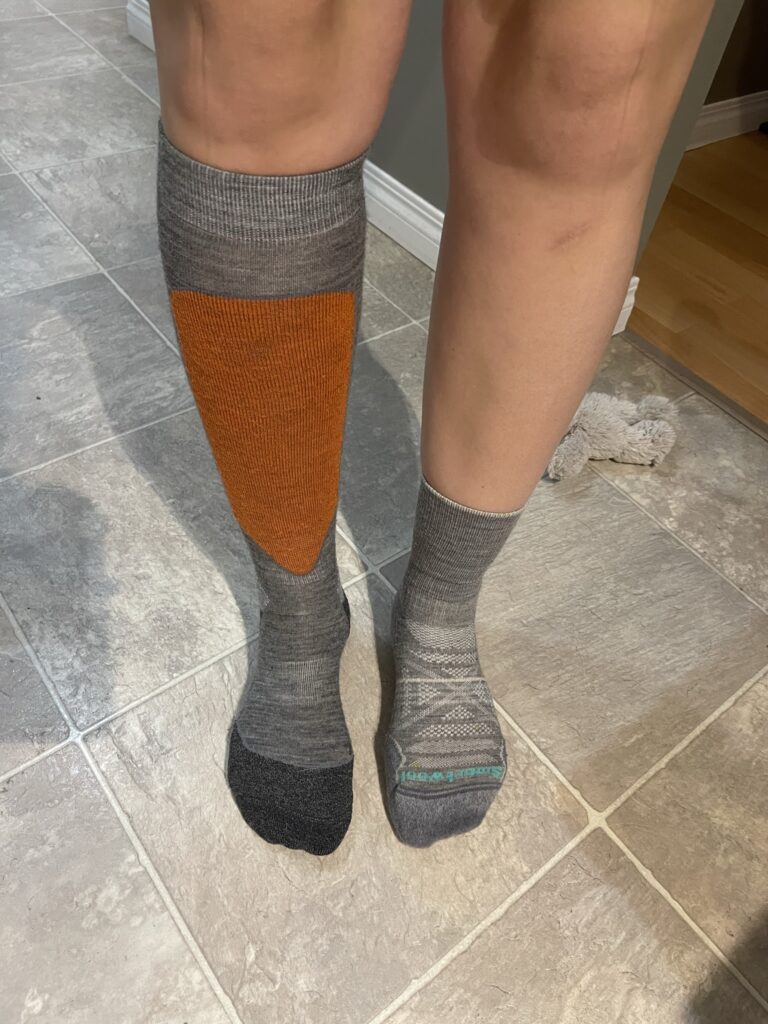
7. Anti-Odor
You’ve probably encountered someone with stinky feet, if you haven’t experienced it for yourself. Activity that causes your feet to sweat is likely to cause your feet to smell.
In addition to hiking socks helping to wick sweat away, they also have antimicrobial properties which prevent the odor from smelly feet from getting into the socks permanently.
This property also becomes very helpful on backpacking trips when you don’t want to carry more weight than needed (meaning you likely will end up wearing a pair of socks over a couple days).

4 Cons of Wearing Hiking Socks
1. Expensive
Compared to regular socks, hiking socks can be really quite pricey. Some products and stores can mark up prices significantly.
If you find hiking socks out of your price range, look for socks with polyester or wool blends that might not be specifically marketed as “hiking socks”.
As well, look for sales and deals through outfitters, rather than buying through retailers directly. Also consider buying off-season or on holidays like “Black Friday”, where prices are often reduced.
2. Might Not Be Multiuse
While you can wear hiking socks for everyday use, this will wear down the socks prematurely. As well, hiking socks can be thicker than you might need or prefer for everyday activities.
Hiking socks might be too heavy duty for daily activities such as going to work. You might find your feet feeling warmer than normal, causing you to sweat when you normally wouldn’t.
Hiking socks can double for other activities, such as running, skiing, snowmobiling, etc., but you might find that socks marketed for those activities work better. For example, hiking socks might not provide enough cushioning in a ski boot and might be too thick and warm for running.
3. Unsightly Lines
One downfall that I find about hiking socks is that the top of the sock presses into my calf a bit. While I don’t find this uncomfortable, it does make a distinguishable unsightly line when I’m wearing leggings overtop of the socks.
A lot of my hiking friends wear their socks overtop of their pants which does prevent the line, but I personally don’t love the style choice.
One other way to mitigate the line caused by hiking socks is wearing taller socks, so the top of the sock ends by the knee crease. Although there is still a line caused by the sock up by the knee, I find it to be much less noticeable.
Although this downfall is fairly minor in comparison, many people hike for the photos, and this could be a consideration.

4. Might Not Be Size Inclusive
I am a mid-sided female, and I find most of my hiking socks get fairly stretched out over my calves. Some of the patterns even become hard to distinguish while I’m wearing them (which is another reason I don’t love wearing them over top of my pants when hiking).
I have had to buy socks that are designed for men to better fit my feet and calves. While this is fine, I don’t always appreciate that I’m not included in female sizing.
Plus-sized socks do exist, though they’re often not carried in retail stores, or are carried in limited supplies.
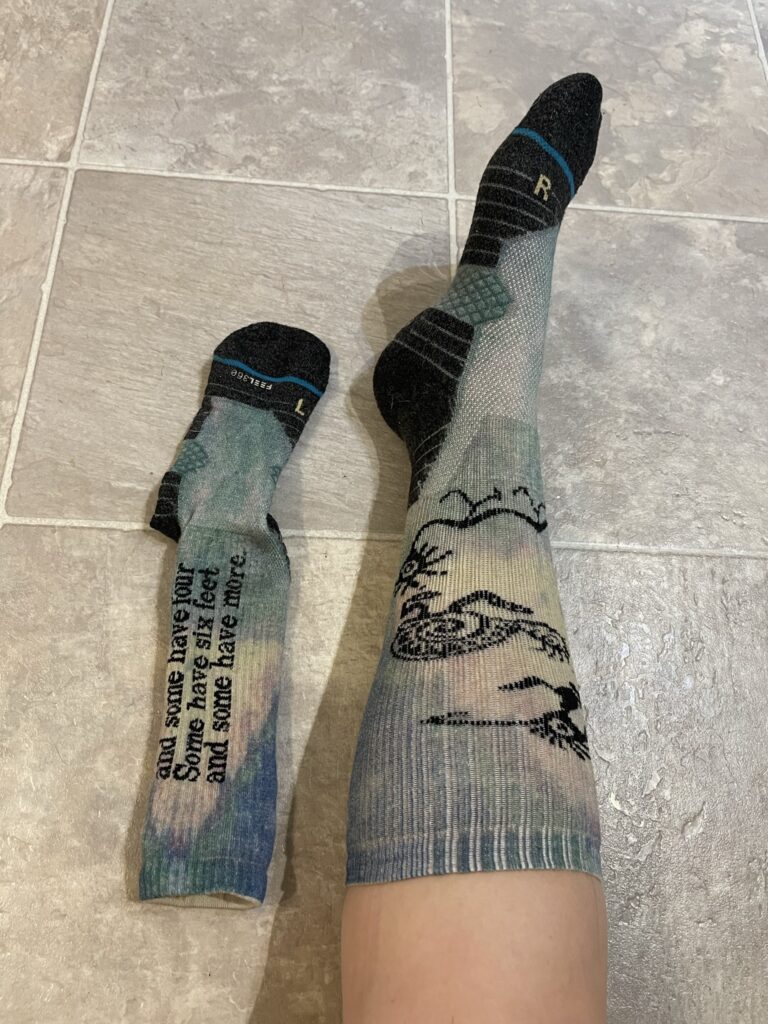
4 Pros of Wearing Regular Socks
1. Comfortable
Many people have socks that they know and love. The “go-to” sock might be something you have used in high activity and found worked well for you.
If you know a sock has been comfortable for you in times of high activity, or you’re not prone to blisters and sore spots, regular socks might be preferable for you.
2. More Affordable
Regular socks can often be quite inexpensive, especially when compared to hiking socks. If you’re on a budget, you can wear regular socks for hiking. Consider bringing an extra pair to change into if your feet become wet from sweat.
3. Likely Already Owned
You probably have several socks already in your possession, whereas you probably don’t already own hiking socks. Sometimes you might not have the ability to quickly run out and buy hiking socks, particularly if you live in a smaller town or are planning a last-minute hike.
In this case, regular socks might be preferable to wear instead of hiking socks. Consider packing Bandaids for blisters or bringing extra socks to change into when needed.
4. Style Preferences
Sometimes people hike for the aesthetic or for the photos. If this is the case, you might not want to wear hiking socks if you don’t like the patterns or styles.
Regular socks come in far more styles and sizes than hiking socks. You might find you prefer regular socks for the way they look compared to hiking socks.
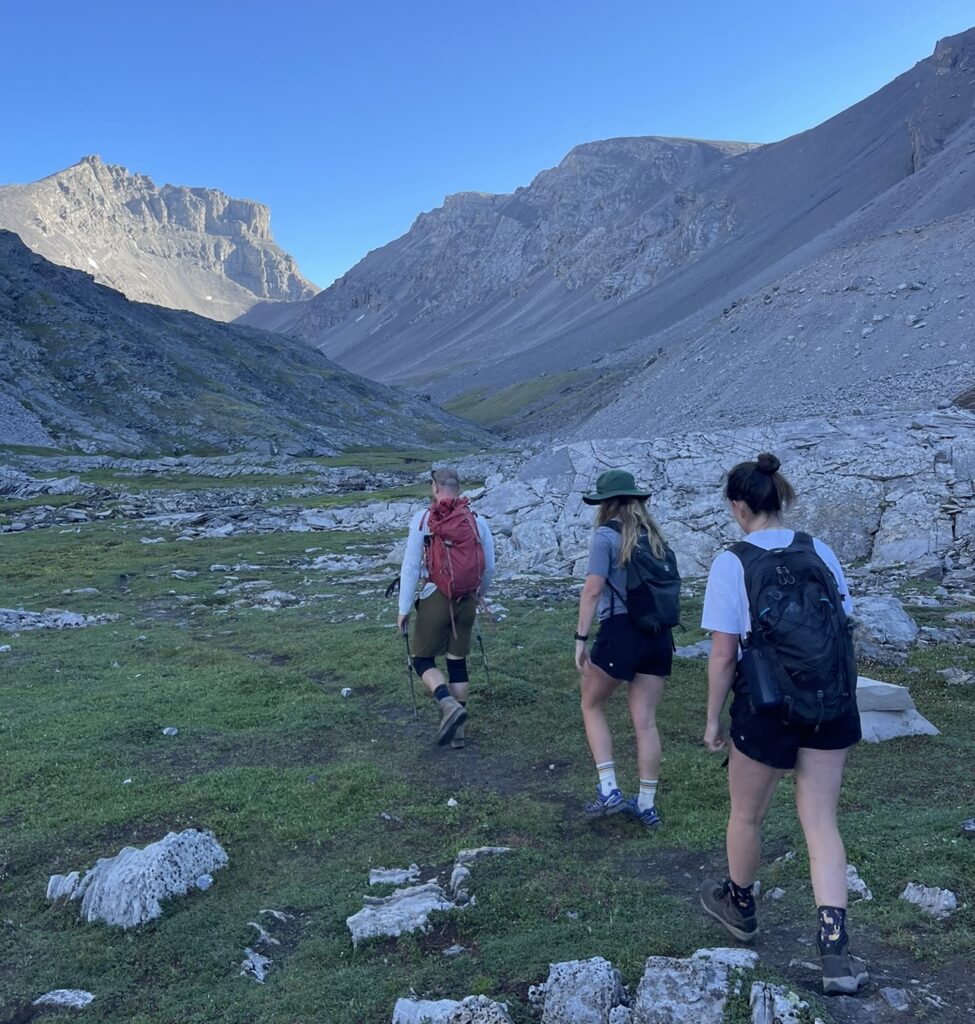
7 Cons of Wearing Regular Socks
1. Doesn’t Wick Sweat
Regular socks are often made from cotton or a cotton blend. This fabric becomes wet with sweat, and that moisture has no place to go. The socks quickly become saturated, and that moisture sits against the skin.
2. Cold Toes
In the wintertime or in cold temperatures, when regular socks become wet with sweat, they start to pull heat away from the body. This leaves your toes in particular very vulnerable to becoming cold.
In winter, this can become quite dangerous. Cold toes quickly become painful. If the problem isn’t corrected, you’re at risk for frostbite and permanent nerve damage on your toes.
3. Increased Friction
Socks that aren’t designed for hiking leave your foot vulnerable to increased friction.
You might find your foot slides around more inside the hiking boot if you wear regular socks. As well, the fabric of the sock might rub more against the skin of your foot.
This leaves your foot vulnerable for irritation.
4. Increased Chance of Blisters
Due to the increased moisture and friction that you are susceptible to if you wear regular socks when hiking, you are therefore at an increased risk of developing blisters.
Blisters form with heat, moisture, and friction. They most often form on the back of the heel as your foot slides up and down against the boot with each step.
Bring Bandaids, extra socks, or consider wearing a sock liner to prevent this from occurring if you wear regular socks while hiking.
5. No Cushioning
Most regular socks don’t have extra padding in the ball and heel of the foot.
While this isn’t a detrimental problem, you might find that your foot is sore after a long hike in regular socks. Another problem this causes is premature wearing of the sock. Holes might start to develop in these spots after repeated use.
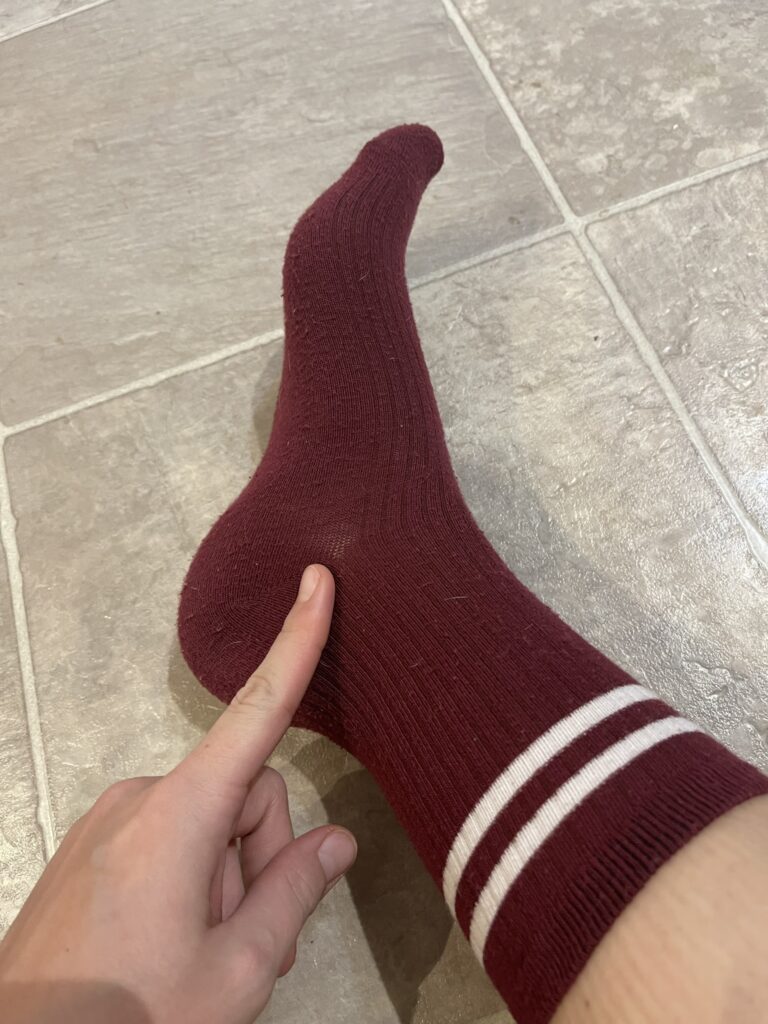
6. Not Tested for Hiking
Most regular socks aren’t put through any sort of tests to see if they are durable or supportive enough to wear while hiking.
While you might be just fine hiking in regular socks, it’s hard to know what specific problems might arise on the hike.
This means you have to prepare for a wider range of problems in the backcountry when you’re far from help, rather than just wearing a sock designed specifically for your activity of choice. Sometimes, foot pain and problems can be quite disabling.
7. Holds Odor
Regular socks aren’t meant to sustain vigorous activity that produces sweat.
As your foot sweats and creates odor, that sweat and odor goes into the fabric of the sock. Without antimicrobial properties, these socks hang onto those smells and can be hard to wash away.

When to Wear Hiking Socks Instead of Regular Socks
I would recommend wearing hiking socks for:
- Most (if not all) hiking adventures – Hiking socks really do make the hiking trek more comfortable and enjoyable.
- Walking outside longer than 30 minutes – This is usually the timeframe it takes my feet to start sweating, which is then mitigated by hiking socks.
- Winter hiking or cold hiking – I would never hike without hiking socks in cold weather. They are a crucial piece of clothing to ensure my toes don’t get cold or frostbitten in severe weather.
I would suggest that if you have the means to buy hiking socks, you should invest in a pair (or a few pairs), particularly if you’re planning on hiking on a somewhat regular basis.
Questions?
Is there something I missed or didn’t answer? Drop a comment below and I’ll get back to you!
Happy trails!

